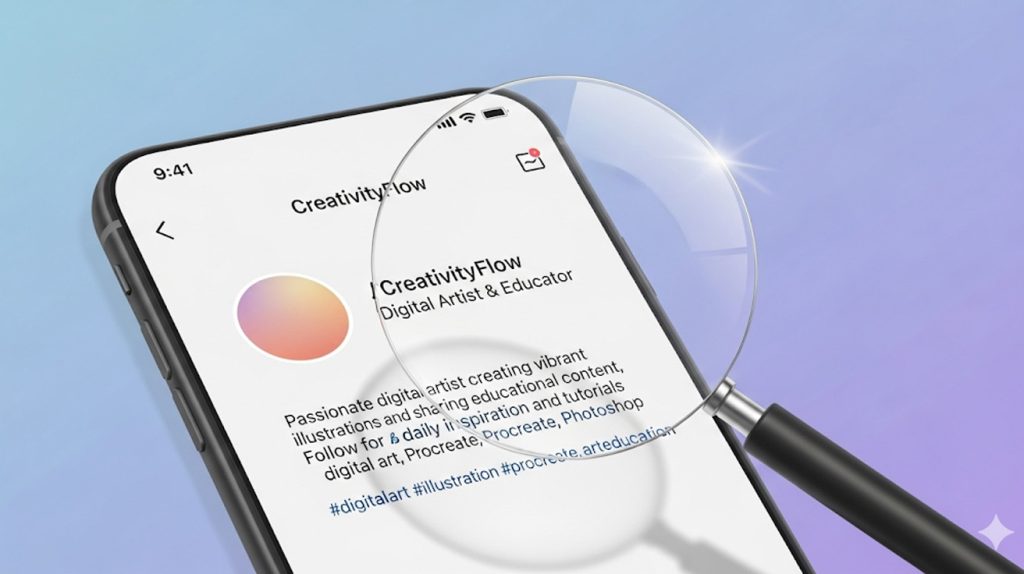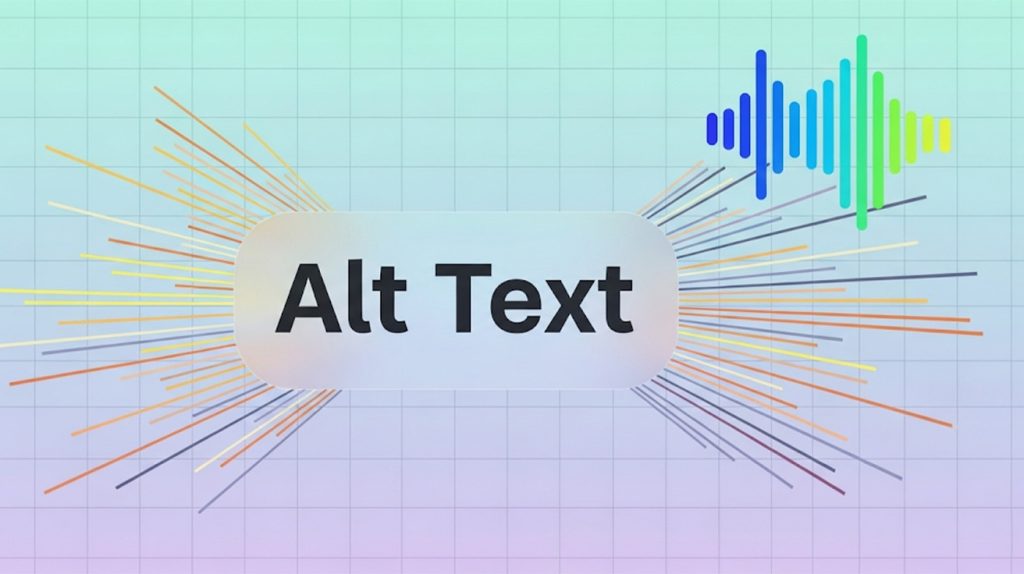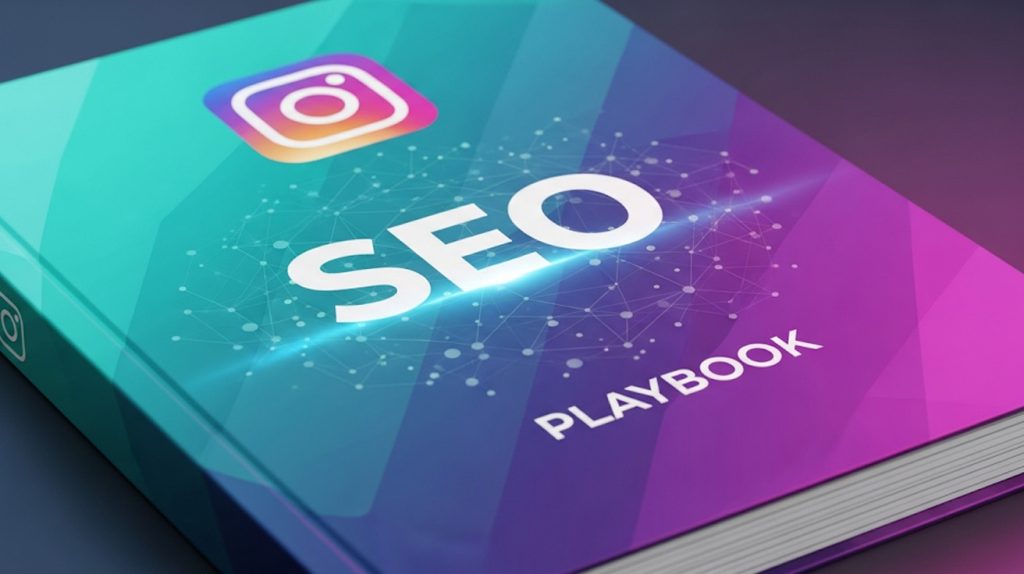Let’s clear something up right away. When you hear the word “SEO,” your mind probably goes straight to Google. You think of websites, keywords, and complicated backlinks. You think, “that’s for someone else.”
But here’s a secret: Instagram is a search engine, too.
Think about it. When someone is looking for a fitness coach, they go to the search bar and type in “fitness coach.” When they’re looking for content about social media marketing, they’re browsing hashtags and the Explore page. These are all search functions, and if you want to get found by your ideal audience, you need to play by the rules.
This guide is your playbook. We’re going to break down 8 simple but powerful SEO techniques you can use right now on Instagram. These aren’t just tricks; they’re the exact strategies that top creators use to get discovered by new followers organically, without paying for a single ad.
Ready to stop guessing and start getting found? Let’s dive in.
The Profile-Level SEO (Techniques 1-3)
Before you even post your first piece of content, you need to set up your profile for success. Think of your profile as your website’s homepage—it’s the first thing people see, and it’s the first place Instagram’s algorithm looks to figure out who you are and what you do. These first three techniques are all about making sure your profile screams “I’m the person you’re looking for!”
Technique #1: The Profile Handle
Your handle is your brand name, but it’s also a powerful SEO tool. If your handle is too generic, it’s going to get lost in a sea of other accounts. The best handles use a mix of a strong brand name and a relevant keyword.
For example, instead of just @marysdesigns, you could be @marysdesigns_interiors if you specialize in interior design. This simple tweak immediately tells the algorithm what your account is about, which helps it show your profile to the right people.
Technique #2: The Profile Name/Title
This is a prime piece of real estate that most people completely miss. Your name is a clickable, searchable field. So don’t just put your name there. Combine it with your niche to make it searchable.

For example, my name is Marketing Kip, but my name/title field would be Marketing Kip | Instagram Growth Strategist. When someone searches for “Instagram Growth Strategist,” my profile is more likely to show up. Use this field to tell the algorithm and your audience exactly what you do.
Technique #3: Location Tags
This is a non-negotiable for local businesses, but it’s also a powerful tool for anyone targeting a specific region. Adding a location to your bio tells Instagram to show your content to people in that area.
This can be as broad as “New York City” or as specific as your neighborhood. If you’re trying to build a local community or attract clients in a specific location, using a location tag is one of the easiest ways to get found by the people who matter most.
The Content-Level SEO (Techniques 4-6)
Once your profile is optimized, you need to make sure your content itself is working for you. This is where you apply SEO directly to your posts, helping them get discovered by new audiences who are actively searching for what you have to offer. These next three techniques are your content’s secret weapons.
Technique #4: Alt Text
This is one of the most underutilized SEO features on Instagram. Alt text is a descriptive text you write for an image. It’s designed to help people with visual impairments, but it also tells the Instagram algorithm exactly what your post is about.
Instead of letting the algorithm guess, you can be crystal clear. When you post a picture of a new workout routine, you can add alt text that says, “A beginner’s 15-minute at-home workout routine for building core strength.” This simple step significantly boosts your chances of showing up in search and on the Explore page.

Technique #5: Reel Topics
The Instagram algorithm prioritizes content that is relevant to a user’s interests. When you choose a topic for your Reel, think about what your audience is actually searching for.
If you’re a marketing coach, instead of a generic “marketing tip,” create a Reel on a specific topic like, “How to use viral audio for your brand.” The more specific your topic, the more likely your Reel is to be shown to the exact people who want to see it. It’s about targeting with a laser focus, not just a broad approach.
Technique #6: Reels Audio
The audio you use on your Reels is a crucial SEO signal. When you use a trending audio, you’re tapping into a stream of content that the algorithm is already pushing. But even more powerful is using your own original audio and labeling it with a relevant keyword.
For example, if you’re a fitness coach creating a Reel about a high-intensity workout, you could record your voice and title the audio “HIIT Workout Motivation.”
This makes your audio a searchable keyword, and whenever someone clicks on it, they’ll find all the other Reels that used your original audio. This is a brilliant way to get your content in front of a new audience.
The Engagement-Based SEO (Techniques 7-8)
Your profile is optimized, and your content has clear signals. Now, it’s time for the final piece of the puzzle: using engagement itself as an SEO strategy.
The Instagram algorithm uses engagement as a primary signal to determine what to show on the Explore page. These last two techniques are all about creating content that people actually want to interact with.
Technique #7: Post Caption
A great caption is more than just a few words. It’s a key part of your SEO strategy. Your caption is where you can add valuable, keyword-rich context to your post.
Think of your caption as a mini-blog post. It’s your chance to provide more information and use keywords that help your content show up in the Explore page and search results.

The more descriptive and valuable your caption is, the more likely someone is to spend time reading it, and that time on your post tells the algorithm that your content is high-quality.
Technique #8: Hashtags
The way we use hashtags has changed, but their power for discovery hasn’t. Modern hashtag strategy is about being hyper-specific and choosing a mix of niche hashtags. Instead of using generic ones like #marketing or #business, which are too broad, you should use hashtags that are relevant to your specific content and audience.
For example, #instagramgrowthforcoaches is a much more effective hashtag than #socialmedia. You can even hide your hashtags in the first comment to keep your caption clean, but they will still work. When you use the right hashtags, you’re telling the algorithm exactly who your content is for, which helps it get in front of the right people.
Final Word: Your New Organic Reach Strategy
You’ve made it to the end. You’ve gotten past the surface-level advice and embraced the mindset of a pro. No more throwing content at the wall and hoping something sticks.
You’re now armed with a bulletproof system—a definitive set of rules for creating carousels that don’t just get a few likes, but drive real, measurable growth for your brand.
Remember, this isn’t about luck or a magical algorithm hack. It’s about a consistent process. You know how to craft a hook so magnetic it stops the fastest thumb.

You know how to build a narrative that delivers real value and establishes your authority. And you know how to polish your delivery, ensuring your content is as powerful as your message.
This isn’t just about making better carousels. It’s about building a predictable system for content creation that takes the guesswork out of your strategy. By applying these 10 rules, you’re building a content engine that works for you, giving you the power to create a loyal audience, generate leads, and build a business that is truly unstoppable.
Your challenge now is simple: choose one of the rules you learned and apply it to your very next post. Which one are you going to tackle first?

